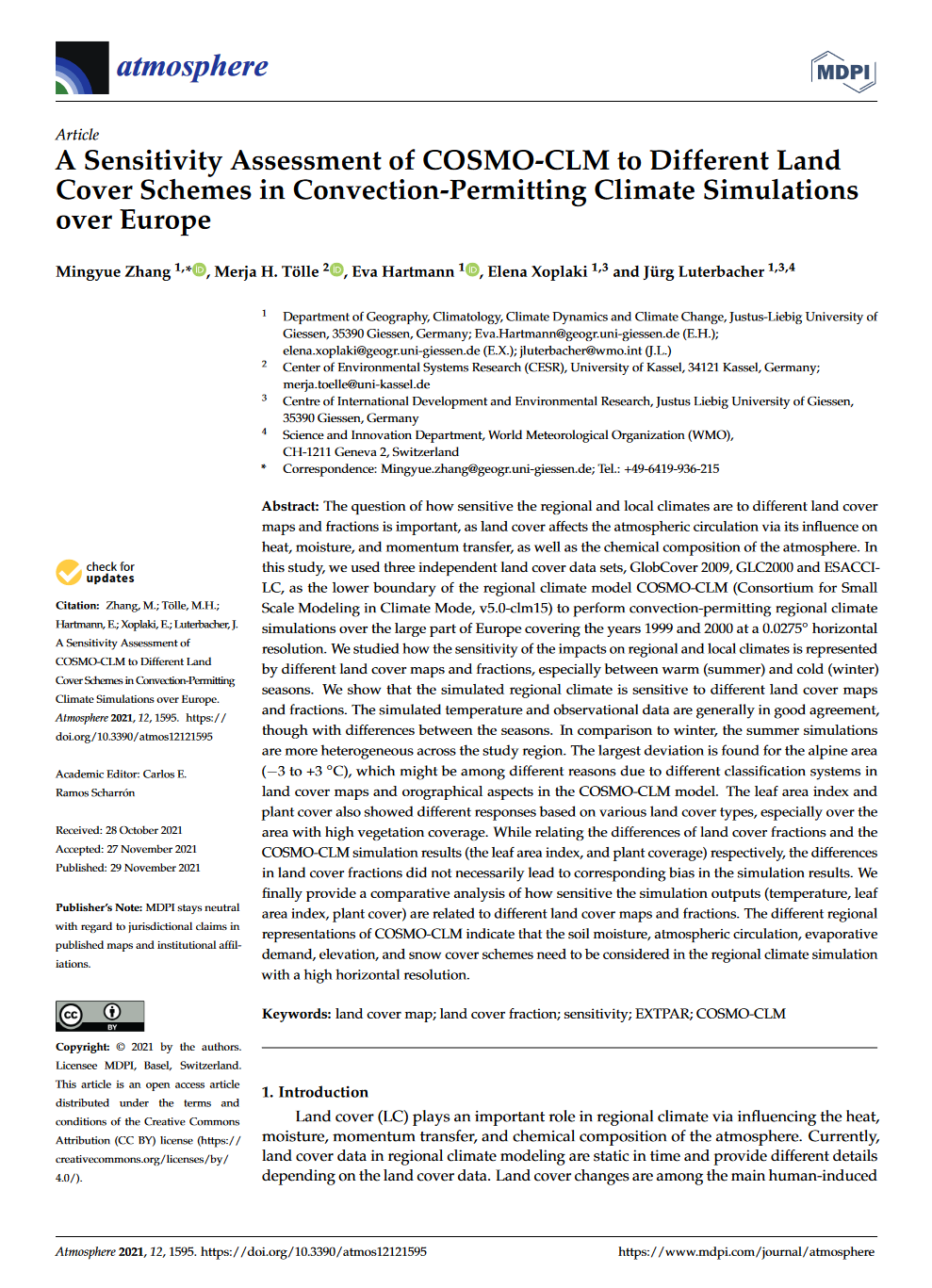The question of how sensitive the regional and local climates are to different land cover maps and fractions is important, as land cover affects the atmospheric circulation via its influence on heat, moisture, and momentum transfer, as well as the chemical composition of the atmosphere. In this study, we used three independent land cover data sets, GlobCover 2009, GLC2000 and ESACCI-LC, as the lower boundary of the regional climate model COSMO-CLM (Consortium for Small Scale Modeling in Climate Mode, v5.0-clm15) to perform convection-permitting regional climate simulations over the large part of Europe covering the years 1999 and 2000 at a 0.0275° horizontal resolution. We studied how the sensitivity of the impacts on regional and local climates is represented by different land cover maps and fractions, especially between warm (summer) and cold (winter) seasons. We show that the simulated regional climate is sensitive to different land cover maps and fractions. The simulated temperature and observational data are generally in good agreement, though with differences between the seasons. In comparison to winter, the summer simulations are more heterogeneous across the study region. The largest deviation is found for the alpine area (−3 to +3 °C), which might be among different reasons due to different classification systems in land cover maps and orographical aspects in the COSMO-CLM model. The leaf area index and plant cover also showed different responses based on various land cover types, especially over the area with high vegetation coverage. While relating the differences of land cover fractions and the COSMO-CLM simulation results (the leaf area index, and plant coverage) respectively, the differences in land cover fractions did not necessarily lead to corresponding bias in the simulation results. We finally provide a comparative analysis of how sensitive the simulation outputs (temperature, leaf area index, plant cover) are related to different land cover maps and fractions. The different regional representations of COSMO-CLM indicate that the soil moisture, atmospheric circulation, evaporative demand, elevation, and snow cover schemes need to be considered in the regional climate simulation with a high horizontal resolution.

